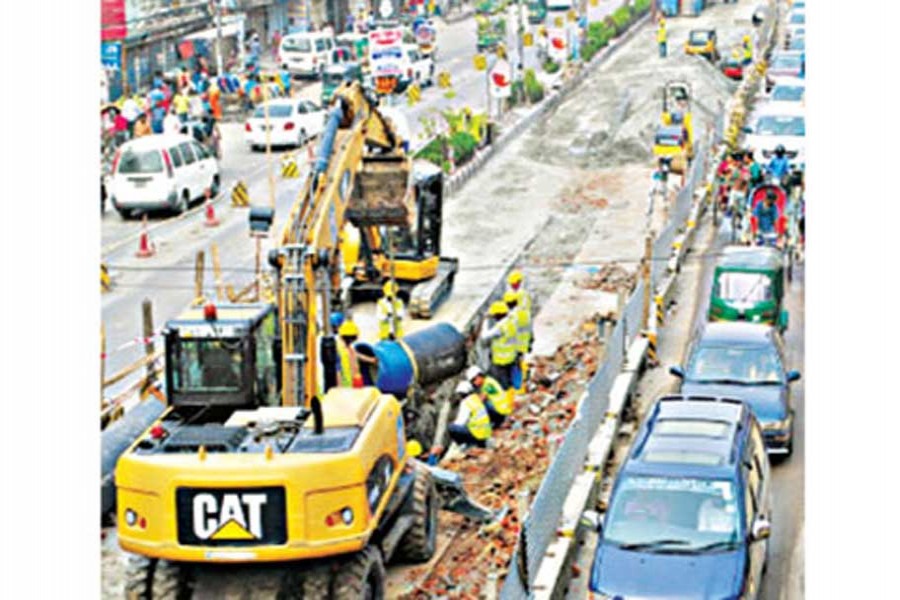A new thrust is going to be given to implementation of development projects beginning with February, and into the second half of the fiscal 2018-19. The idea of a roving high-powered task force to periodically visit divisional headquarters to monitor project implementation work commends itself for a good number of reasons. In the first place, Dhaka-centric oversight practically means indirect, distant and somewhat alienated learning of how a project is shaping or not shaping. Secondly, on-the-spot sighting of upcoming project and knowledge at first hand about it could facilitate timely intervention in and traction to the project, if need be. In fact availability authority nearer project sites would help not only decentralise implementation at the operational level but also have the benefit of associating public opinion with and participation of people in the project. In keeping with the Right to Information (RTI) Act, citizens may be encouraged by the Information Commission offices to seek information on the public undertaking in their area.
What really packs the proposed government committee with power is the fact that planning minister and secretary of the implementation, monitoring and evaluation division (IMED) of the planning commission will be on the roving teams to untangle issues upfront pushing agencies for coordination as well. It is good to note that the IMED is being helped to play its due role. Solutions have to be found to obstacles to project implementation: Land acquisition and procurement delays, complex tender procedures, complicated bidding and procurement document approval process and of course, lack of coordination among the agencies.
The first half of the ongoing fiscal i.e July-December, 2018 recorded annual development programme (ADP) implementation rate of 27 per cent. This is a repeat of exactly similar performance rates during corresponding periods of the preceding two years. Thus the government is left with the uphill task of completing 73 per cent of the ADP in the remaining five months of the fiscal year. This has been more or less the pattern of implementation of development projects over the years evoking a metaphor like pushing a huge boulder up a steep mountain side. But it needs not be the case at all! Desperation is not the answer, especially when a catching up job is involved risking haste and sloppiness. In the main, the principal, integrated focus must be had on implementing major components of the project portfolios ensuring quality and timeliness. Under such compelling circumstances, the planning commission had to try something new having, it appears, exhausted other avenues. Those included prescribed completion of paper work at the earliest in the first quarter, retention of project directors for the duration of projects, delegation of authority to the directors, easing of procurement producers, apart from quarterly reviews for stock-taking and nudging the agencies to pull up their socks in stepped-up synchronisation. It may do a world of good for ADP management and implementation were the results of the steps already envisaged or taken put into a status report to arrive at an effective methodology.
Let no one forget that the overarching purpose of the high-powered task force on a mission to divisional headquarters to monitor project implementation is to ensure timely and qualitative project implementation. All of this is aimed at realising the prospects for financial and economic returns on projects towards reaching fruits of development at the doorsteps of the people.


